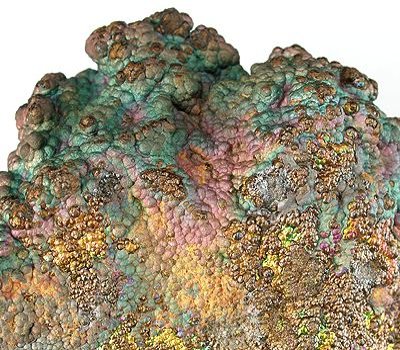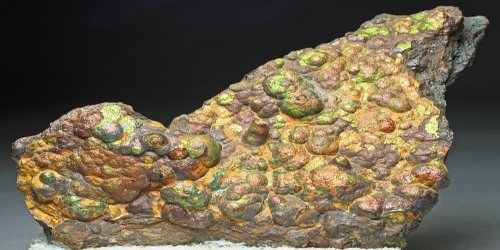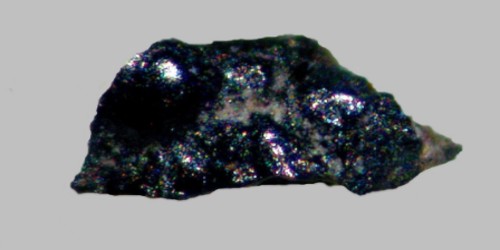Hermannjahnite is a rare sulfate mineral with the relatively simple formula CuZn(SO4)2. It is one of many fumarolic minerals discovered on the Tolbachik volcano. The mineral is named in honor of Hermann Arthur Jahn (Jahn-Teller effect is pronounced in the structure of hermannjahnite)
General Information
- Category: Sulfate
- Formula: CuZn(SO4)2
- Crystal system: Monoclinic
- Crystal class: Prismatic (2/m) (same H-M symbol)

Fig: Hermannjahnite is a rare sulfate mineral
Physical properties
- Cleavage: None
- Tenacity: Brittle
- Fracture: Uneven
- Hardness: 3.74
- Optical Properties: Transparent.
- Color: White to colorless; sometimes displays light grayish, yellowish, greenish, or bluish tints.
- Streak: White.
- Luster: Vitreous.
Occurrence: As sublimates around a volcanic fumarole.
Hermannjahnite, is a new mineral with chalcocyanite derivative structure from the Naboko scoria cone of the 2012–2013 fissure eruption at Tolbachik volcano, Kamchatka, Russia.
Association: Anhydrite, itelmenite, saranchinaite, chalcocyanite, euchlorine, thénardite, aphthitalite, hematite (Saranchinaitovaya fumarole); dolerophanite, tenorite, euchlorine, fedotovite, chalcocyanite, langbeinite, aphthitalite, anhydrite, hematite, dravertite (Arsenatnaya fumarole).
Relation to other minerals
Hermannjahnite is a zinc-analogue of dravertite – another mineral from prolific Tolbachik. Minerals somewhat chemically similar to hermannjahnite include ktenasite and christelite.
Information source:
















